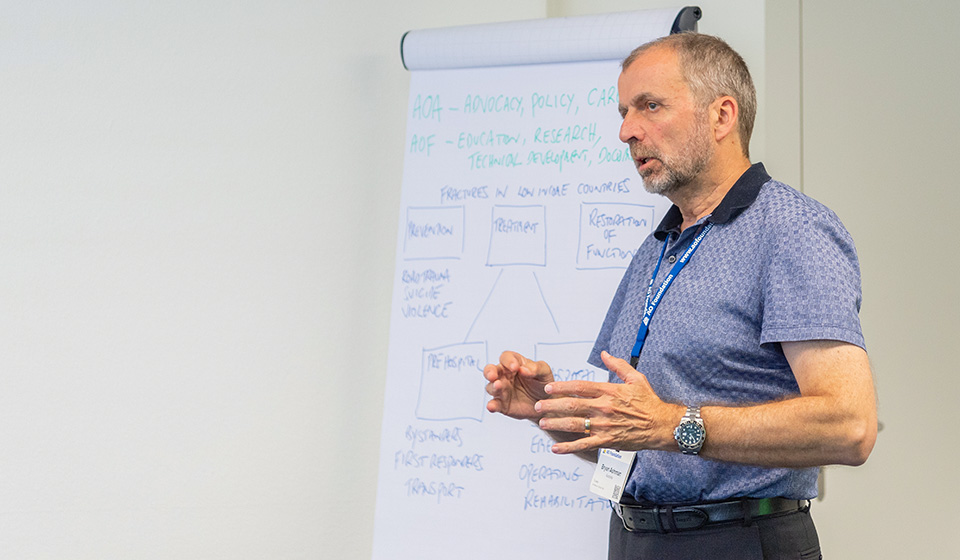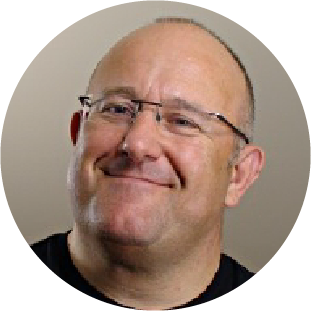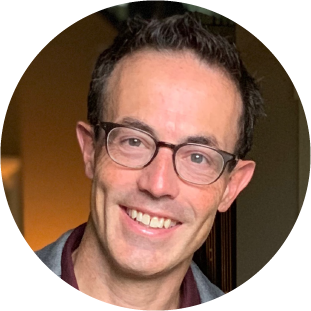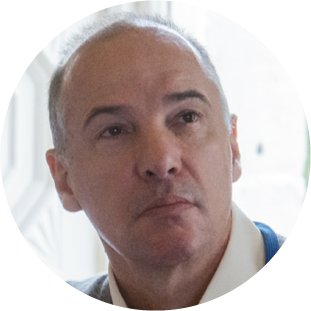
This enormous undertaking is part of AO Spine’s mission to promote excellence in patient care through optimal training of surgeons. The existing curriculum has been in use for more than 10 years. For the last two years, the AO Spine Curriculum Task Force and the AO Education Institute have worked on an entirely new curriculum to match changes occurring across the entire field of training and education. The AO Spine’s Education Commission Chairperson Bryan Ashman is leading the project. Here, he explains why a new curriculum was needed and how it will be implemented.

This process increased understanding of the many different systems in which we train spinal surgeons across the globe.
Why did AO Spine create a new curriculum?
The first edition of the AO Spine curriculum was published in 2010. The decade has seen many changes in surgical practice and medical education, so it was appropriate to review the curriculum to keep it fit for purpose as the blueprint for all our educational activities. Also, we have been working on a project for a global spine surgery training program offered online and the revised curriculum formed the framework for the program's syllabus.
We have included the broader skills beyond medical and surgical expertise.
What is new about the new curriculum?
First and foremost, we decided to use the concept of Entrustable Professional Activities (EPA) as the starting point for the new curriculum. Our EPAs describe the units of day-to-day work of spine surgeons and these are linked to the specific competencies that are required to perform this work. To paraphrase some current educational concepts, this process situates the activities within the community of practice where spine surgeons are entrusted to act independently, using the competencies they have acquired to achieve the desired outcomes for their patients. In this curriculum we have included the broader skills beyond medical and surgical expertise, such as communication, teamwork, leadership, and ethical practice.
What can participants expect from future educational events based on the new curriculum?
Because we have chosen a curriculum structure that emphasizes how competencies relate to real clinical work; participants will see a focus on educational events that place the learning experience in the context of their workplace. There will be more use of online tools before each event, particularly for hands-on training, in order to concentrate on delivering content that is relevant and realistic. There will also be more emphasis on simulation in the learning environment as technology advances in this area. Finally, participants will see more events linked to non-technical skills like decision-making, managing stress, leading teams, teaching, and mentoring.
How will the new curriculum be rolled out?
Implementation of the new curriculum will be used during the 2020 Annual Needs Assessment (ANA) for planning the educational events taking place in 2022. Details will be provided by AO Spine staff to Regional Boards, Council Members, and faculty during 2020, including the Chairperson's Education Program from the AO Education Institute.
The new curriculum will be integrated for those enrolling onto the AO Spine Global Diploma Training Program, launching in February 2021.
This endeavor would not have been possible without the highly committed taskforce of surgeons, to all of whom AO Spine are extremely grateful. We talked to Evan Davies, Bradley Jacobs, and Asdrubal Falavigna from the taskforce to find out the surgeons' views on the process.
Q: How was the process, from your personal view?
AO Spine allows a truly global experience, and at the same time, surgeons gain knowledge from world leaders.

Evan: As always, working with an international organization like AO Spine allows us to develop a truly global experience, but at the same time, individual surgeons gain knowledge from world leaders. It’s impressive to see how much work individuals and staff placed into the project. The meetings, both virtual and face-to-face, showed how powerful collective working and idea generation can be. We still needed the drive and leadership of Bryan Ashman to push us forwards, and he has been an inspiration to us all.
The AO Spine curriculum is the blueprint for all our educational activities.

Bradley: Bryan Ashman has really been exceptional at bringing together an international group of spine surgeons and getting us all on the same page related to the overarching goals for the project. The taskforce members come from very different training backgrounds and have very different experiences and notions of what a training program and an educational event in spinal surgery should look like. As such, it was not trivial to get us all marching in the same direction, but Bryan certainly did. I viewed this process as a great self-learning experience, both from the perspective of developing my own skills in curriculum development but also to gain understanding of the many different systems in which we train spinal surgeons across the globe.

Asdrubal: The entire process went smoothly. The vision and leadership of Bryan Ashman was exceptional. From the word go, we understood the idea, identified the goals, defined the professional work of the specialist medical practitioner using Entrustable Professional Activities (EPAs), selected the competencies, and established the assessment. Often, it was necessary to deconstruct what we had learned and relearn the new way to deliver knowledge. I wish I would have had this curriculum while I was a resident/fellow. I would have learned more efficiently.
Q: What have you achieved?
Evan: I’ve been involved in the curriculum development specifically around spinal deformity in adults and pediatrics. It has been interesting how much knowledge there is already available to AO Spine members and educational event participants in the AO Spine Knowledge Forums, printed media, webinars, and digital media. The challenge is organizing these varied media to make them clear to people studying the curriculum through local or regional events and the Global Diploma Training Program. There will be areas that need development and reinvention as we go forward. First, we need to launch the curriculum and create awareness to future event participants and our faculty members.
Bradley: We have already accomplished quite a bit, but we have more to do before we roll out in 2021 and for the Global Diploma Training Program. To date, we have established an overview of the program from a scheduling perspective (two 9-month “semesters”), laid out the different learning modules (trauma, deformity, oncology, etc.) that compose the curriculum, and defined the key learning competencies that compose each module. Our current work focuses on laying out the detailed syllabus with the associated educational resources that will allow participants to successfully work through the curriculum on a week-to-week basis to achieve the key competencies in each module.
Asdrubal: I have a clear understanding of regional differences and needs; this is the first genuinely global curriculum. I understand what makes it unique. It was admirable to see the teamwork of different taskforces of education, educational strategies, faculty management, fellowship and spine centers, and MISS, working together on the curriculum pipeline. I acquired greater interprofessional confidence in my spine colleagues.
Q: What was the reason for you to participate in this process?
Evan: Working with everyone in the team is always the most enjoyable part. Not only does this process allow us to share our expertise, but also the knowledge gained from others is always huge. I know this project will place AO Spine as the recognized global leader in spinal education, knowledge, and assessment. For me, that means being part of something inspirational as well as transformational. I just knew I wanted to be involved in its concept, and I can’t wait to see others getting involved and watch it develop further.
This will provide a standardized educational foundation in spinal surgery on an international level, which is really a novel venture.
Bradley: I was quite keen to participate in this process for several reasons. First, I think that AO Spine is a fantastic organization that offers tremendous value to the global community of spinal surgeons and cannot think of a better organization with which to volunteer my time. Second, I have an interest in surgical education, so this process has allowed me to develop my skills in curriculum development. Third, I felt that there was a significant need for a program like this. Spinal surgery training varies tremendously from country to country so this exercise will allow us to provide a standardized educational foundation in spinal surgery on an international level, which is really a novel venture. Finally, AO Spine membership is very much about community and this process has given me the opportunity to work with and get to know fantastic people from across the globe.
AO Spine will be your one stop for recognition and individual development as a spine surgeon.
Q: From surgeon to surgeon, what will be the greatest benefit of this new curriculum?
Evan: I think the greatest benefit will be that AO Spine will be your one stop for recognition and individual development as a spine surgeon. Those surgeons who have studied the curriculum and undergone the Global Diploma Exam, the Global Training Program, or joined one of the AO Spine educational events will achieve recognized global knowledge in spine surgery. The worldwide benefit, to patients and healthcare providers alike, is that this core knowledge will improve patient care and safety at an internationally recognized level.
Asdrubal: The new curriculum allows us surgeons to learn more in less time. The content is organized and delivered in a compressed manner. The topics are presented in all pathologies like trauma, tumor, deformity, infection, degenerative spine disease, and inflammatory spondyloarthropathy, from anatomy to complex surgery. New technologies make learning possible for all by using online synchronous (live) and asynchronous (pre-recorded) activities with faculty members being keen experts in spine surgery.
Emre Acaroğlu, Turkey
AlaaEldin Ahmad, Palestine
Bryan Ashman, Australia
Evan Davies, United Kingdom
John DeVine, USA
Juan Emmerich, Argentina
Asdrubal Falavigna, Brazil
Harry Gebhard, Switzerland
Michael Grevitt, United Kingdom
Jose Manuel Ignacio, Philippines
Bradley Jacobs, Canada
Yoshiharu Kawaguchi, Japan
KV Menon, India
Shanmuganathan Rajasekaran, India
Luiz Gustavo Dal Olio da Rocha, Brazil
Satish Rudrappa, India
Alpaslan Senkoylu, Turkey
Klaus Schnake, Germany
Mohammad El-Sharkawi, Egypt
Nestor Taboada, Colombia
Muzahem Taha, Iraq
Steve Theiss, USA
Claudius Thomé, Austria
Patrick Tropiano, France
Karsten Wiechert, Germany
Atiq Uz Zaman, Pakistan